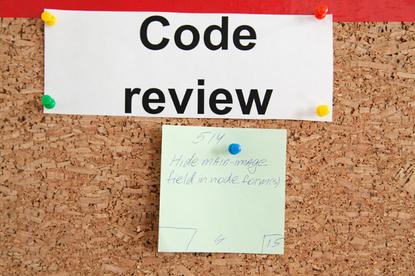Agile: The good and the not so good
- 25 September, 2015 13:42

The use of Agile development methodologies – which enable coders to constantly assess if a project is on track through the entire development lifecycle – is gathering steam across corporate Australia.
For many businesses, the move to Agile is still very much a work in progress. But what are the positives and negatives of deploying an Agile work environment?
The University of New England is using the Agile methodology in its IT group as an “amalgamation, not an adoption,” says the university’s director, information technology, Robert Irving.
There have been several positives, he said. Direction can be changed quickly when planning errors are discovered, and it’s ideal to create a collaborative environment where the IT group can work with other departments. Creating an Agile environment also means people spend less time in meetings and “more work is being done", he said.
But a key drawback is that product owners and sponsors do not know how to let a project go, and continue the Agile relationship well after the transition to operations. Other product owners may also insist on maintaining a culture that promotes only the Waterfall methodology.
Disputes about specifications when changes are made can also be an issue, he said.
“Often, ‘that's not what I meant’ is heard when changes sent by email are installed. Still, it’s better than Waterfall in that respect,” he said.
Meanwhile, Mike Brett, general manager, ICT infrastructure at the Department of Human Services (DHS), said the agency has had success with Agile over the past two years to deliver its mobile apps.
“One of the key lessons we learned was that it does not have to be perfect from day one and that an iterative approach using user feedback to create and enhance a product that is intuitive to use and meets the customer’s needs [is vital],” he said.
The department has also taken these learnings and practices and applied them to its legacy systems, which has helped improve its delivery capability.
“This continues to be a work in progress but we are finding that as we grow our capability and experience with Agile, we are getting better outcomes,” he said.
Agile is about maintaining a disciplined approach to software development at DHS, said Brett.
“I am of the view that Agile does not mean taking shortcuts to deliver using a traditional process at speed but is more about building new multi-disciplinary teams that are able to deliver new capability quickly but with the discipline to ensure all the quality expected is built in from day one,” he said.
When Agile really doesn’t work
Agile methodologies won’t work if there isn’t buy-in from all parts of the business, which may introduce more risk than benefit, said Dimension Data’s national manager, data centre business unit, Nathan Vandenberg.
With any organisational change, the methodology’s introduction must be sponsored and led by senior management and then sustained until the change is embedded throughout the business and becomes the new normal.
“If there isn't this sort of willingness for change across all the parties involved in the end to end development lifecycle, including involved third parties, then existing methods may be preferable,” he said.
Agile methodologies are also not applicable in projects that are specified in advance. There is no need for Agile in building a house to a blueprint (although the mechanics of Agile can be used for task and project management), said UNE’s Irving.
Meanwhile, traditional Waterfall processes continue to be appropriate for large enterprise-capable applications at the Department of Human Services, said DHS' Brett.
“We have enhanced our Waterfall development processes by using the best of Agile development processes, for example, SCRUM meetings that allow for better communication across project teams.
“Stories from industry about getting product out faster than your competitors, even if it is flawed, is not an option for us and not in line with citizens’ expectations.”
Ultimately, Agile shouldn’t be approached lightly as it represents a significant change in the way business operates, requiring new systems, processes and skills, said Dimension Data’s Vandenberg.
“Such a move is a significant undertaking that occurs over time and requires strong leadership to sustain the movement and ultimately, embed a change. A move to Agile, however, can provide significant return to businesses, especially those seeking to introduce new services to market more quickly than their competitors,” Vandenberg said.

